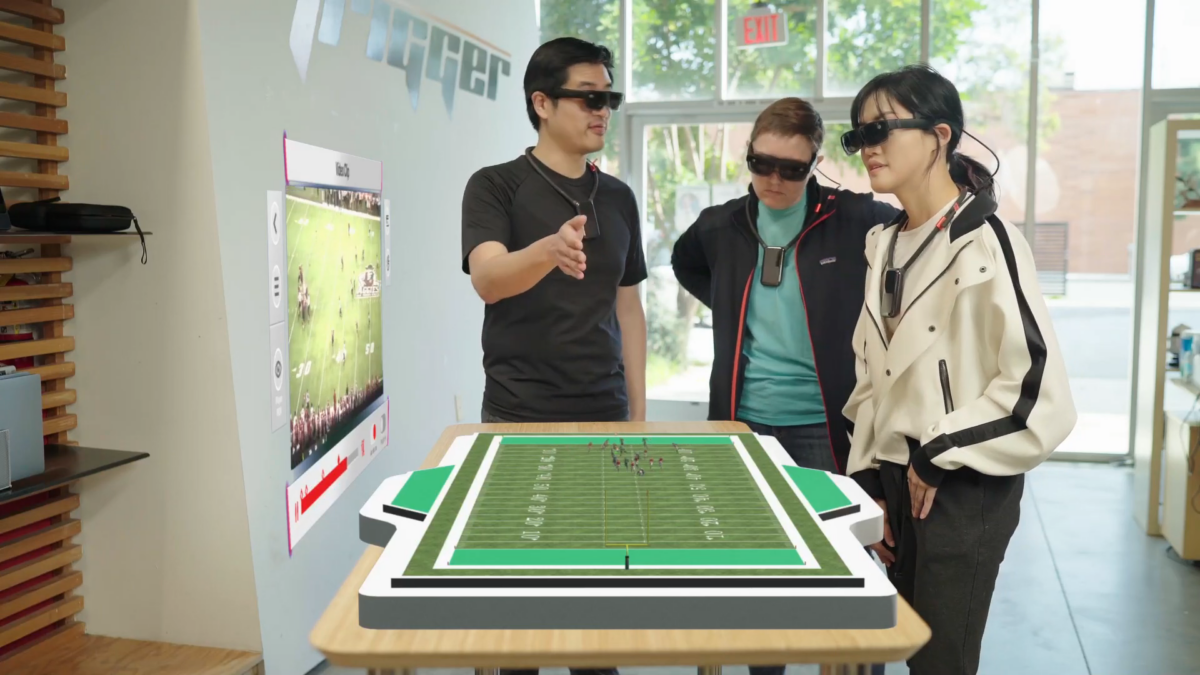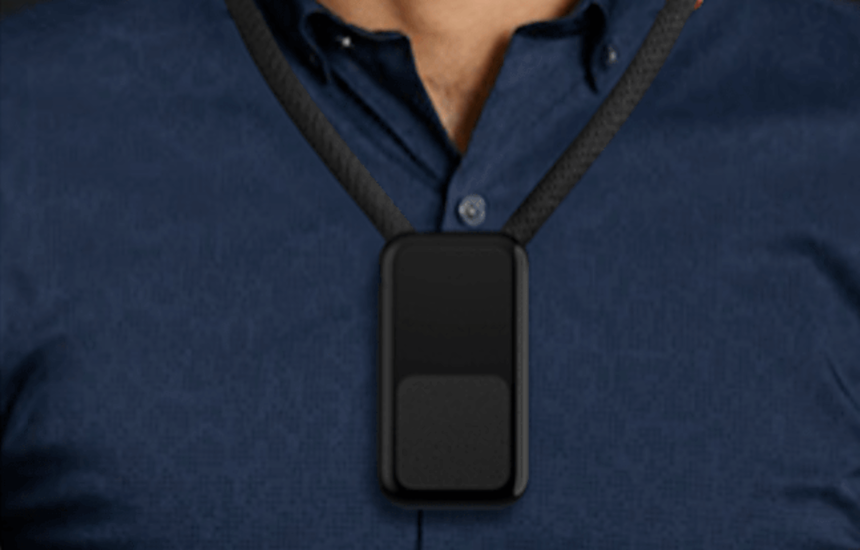Motorola and Verizon develop "5G collar" for VR and AR

April 16, 2023:
Developer Trigger XR now shows Motorola’s and Verizon's "5G collar" in action (see video below). An AR training application created with Snapdragon Spaces allows athletes and coaches to analyze plays.
Using AR glasses, multiple participants examine synchronously streamed match footage and statistics directly in front of them on a table or any other flat surface. There, they can also set markers via hand tracking.
The trailer also shows a "point of view mode". It puts users on a playing field in person, for example on a lawn. All around, the AR glasses show athletes waiting for instructions via hand tracking. There are still no concrete release plans for the 5G collar.
Original article from Februar 20, 2022:
A Motorola collar aims to enable slim VR and AR headsets, including using 5G streaming.
Hardware development in virtual reality and augmented reality is a constant race to miniaturize. One way to keep the goggles as small and light as possible is to outsource the computing unit, for example in the form of backpack PCs like those used in the VR arcade. AR headsets from Magic Leap, on the other hand, use a compact computer that can be stowed in a trouser pocket or attached to a belt like a puck.
Lenovo subsidiary Motorola and U.S. telecommunications company Verizon have come up with another form factor. They are currently developing a "5G Neckband", i.e. a little box plugged into the glasses that is hung around the neck with a sturdy fabric strap.
Technical components for calculations and the wireless connection should dangle more comfortably around the neck and make smaller glasses possible. The included 5000 mAh battery also acts as a power bank for the headset.
Motorola neckband provides power and 5G connectivity
In a first picture, the box is presented together with Lenovo's in-house AR glasses ThinkReality A3. It resembles the Nreal Light with its transparent lenses. Users can arrange up to five virtual screens in the room. The glasses can also be used for remote maintenance or 3D visualization. The necklace is also supposed to work with other VR and AR headsets.

Qualcomm's new mobile flagship Snapdragon 8 Gen 1 works in the box. | Image: Motorola/Lenovo
The chip system is the "Snapdragon 8 Gen 1", which was only introduced in November and can be used for local apps as well as for streaming. The integrated 5G modem with download speeds of up to 10 gigabits per second also makes Qualcomm's new flagship interesting for streaming (upload: 3.5 GBit/s). Verizon's "5G Ultra Wideband Network and Mobile Edge Compute Platform" is used for this. Content from the edge of the network can be streamed to the glasses with high bandwidth and extremely low latency.
A collar for local apps and XR streaming.
The 5G collar enables smartphone users to display their content on more screens around them, according to Motorola's official blog. In addition to use as a scalable "VR theater," the company also mentions training scenarios or "fan experiences" at sporting events. There are no concrete plans for a release yet, with more information to follow in the coming months.
Read more about XR Streaming:
- Nvidia Cloud Streaming for Quest (2): PlutoSphere launches
- Varjo unveils cloud streaming for high-end VR
- XRNow: streaming platform receives million-dollar investment
Note: Links to online stores in articles can be so-called affiliate links. If you buy through this link, MIXED receives a commission from the provider. For you the price does not change.